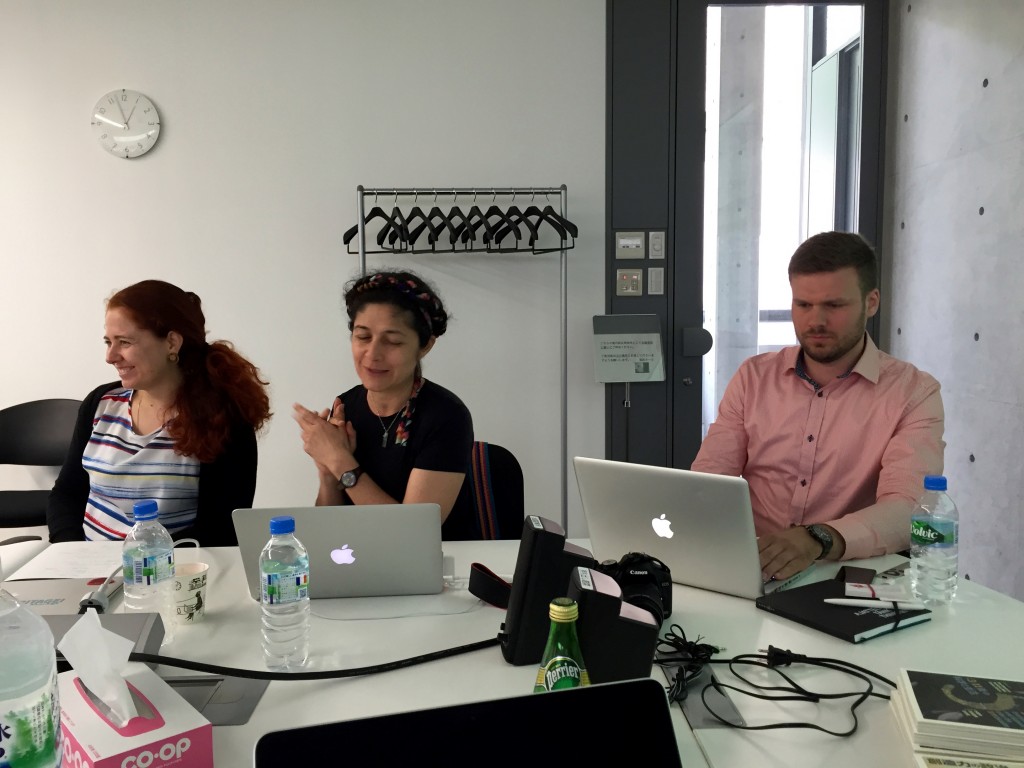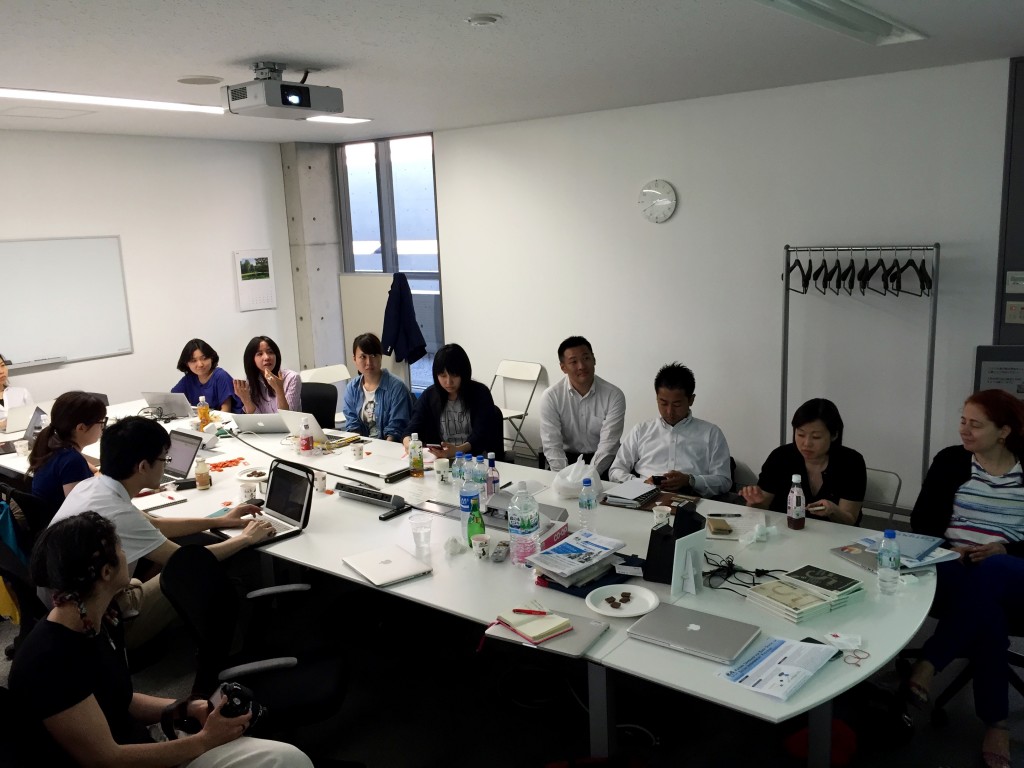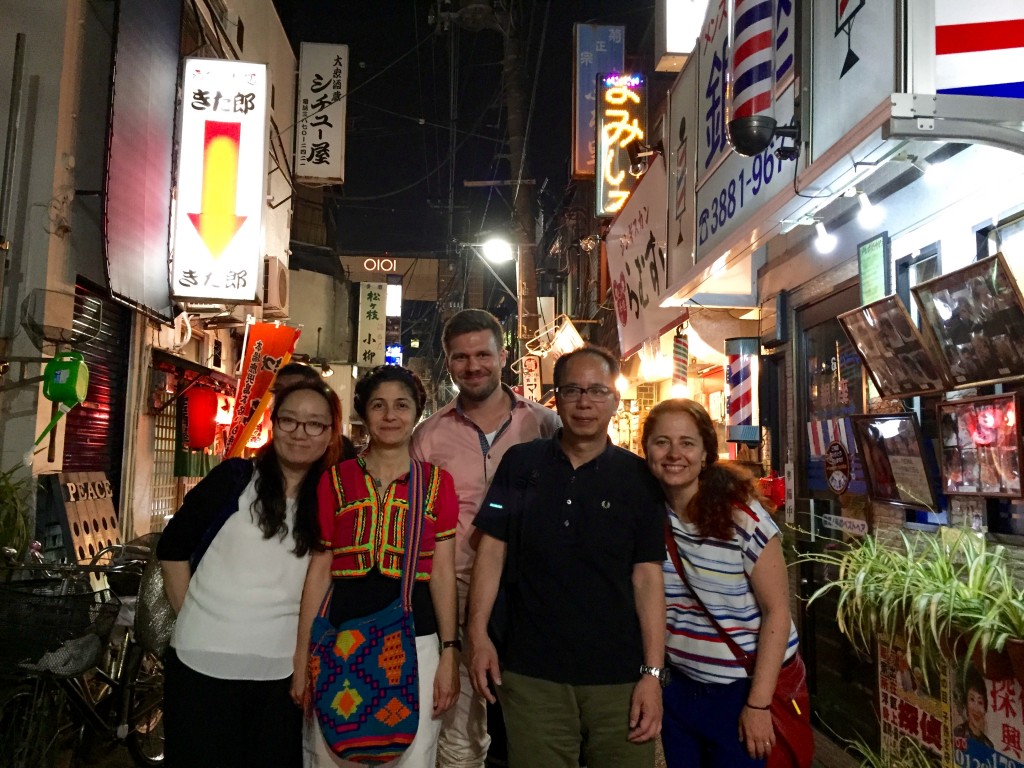
From the right, Sanna Martial, Andrea Botero of the Aalto Univ., Petro Poutanen of the Univ. of Helsinki.
There was a special biotope salon with Finnish, Korean, and Japanese researchers and practitioners from 12:00 to 15:30, Monday June 15 at the first floor meeting room of the Fukutake Hall.
In this salon, there were four presentations with discussion.
Two of Finnish ones are achievements of the bilateral research project, Storyplacing: Co-Design of Digital Storytelling with Geographic Information System.
– Petro Poutanen (Univ. of Helsinki): “Studying everyday self-organized social movements from a story-telling perspective”
– Andrea Botero & Sanna Marttila (Aalto Univ.): “Vignettes from everyday self-organized social movements in Helsinki”
– Utako Morishita (Media Practitioner): “Bridging Finnish and Japanese culture: Distributing Finnish films and the cleaning days in Kamakura city”
– Minjoo Lee (UTokyo): “Overview of Japanese youth culture and social poverty”
– Chairpersons: Shin Mizukoshi (UTokyo)
For your infromation, “Statement of interest” by Finnish three researchers.
In Finland we have in the last few years witnessed a flurry of citizen-driven and organized activities, such as “guerrilla gardening”, with aims to beautify unattended urban spots, or self-assigned urban planning initiatives to revive the local community. In many neighborhoods the traditional hierarchical “residents associations” are being challenged by loosely organized networks of residents, who create different type of place making projects. Internet, social media, and geographical information systems seem to play a catalyst role, and our research interest is to find out what is their role from the viewpoint of urban story-telling and archiving (i.e. how people create, share and make their memories and experiences available to others, thus contributing to the community and the sense of belonging and organization).
By “self-organization” we refer to such citizen initiatives that have initiated and organized their activities bottom-up, in a grassroots fashion, whereas the traditional model would rely on top-down, city- or municipality-driven initiatives. For us, self-organization means that an organization’s “structure” has taken its form ad hoc and is flexible in terms of changes over time. From the perspective of a citizen, people organize their activities as soon as different
opportunities open up and they learn about the place and their surroundings.
We are interested in initiatives in which citizens engage with each others’ to make changes in the city, its urban structure, or how they can experience it. Our project focuses on “places”, and therefore particular areas of the city (how to change them, how to influence their developments, their future or their present, etc.) are good starting points. However, generally speaking also other kinds of applications to “change” the city might be interesting.
After the salon, we had a joyful time in the Kitasenju town. Professor Yoshitaka Mouri of cultural studies, Research Associate Haruka Iharada, and Dr. Minna Valjakka of the University of Helsinki joined us and had a nice night tour over there.

